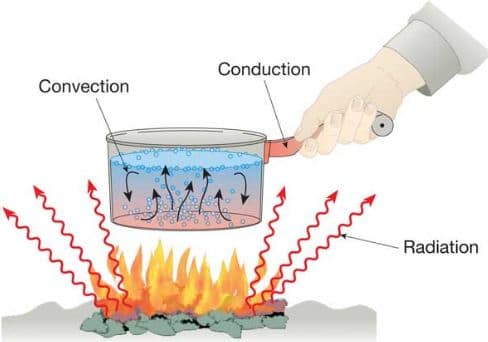4) Thermal conductivity of non-metallic amorphous solids with decrease in temperature
decreases
Related Heat transfer MCQ with Answers
second law of the thermodynamics
Heat transfer takes place as per second law of the thermodynamics.
Second law of thermodynamics: Second law of thermodynamics states that there is a definite limit to the amount of mechanical energy, which can be obtained from a given quantity of heat energy.
According to Claussius, this lay may be stated as ” It is impossible for a self acting machine working in a cyclic process, to transfer heat from a body at a lower temperature to a body at a higher temperature without the aid of an external agency”.
The second law of thermodynamics has also been stated by Kelvin Planck as ” It is impossible to construct an engine working on a cyclic process, whose sole purpose is to convert heat energy into work.” According to this statement, the second law of thermodynamics is sometimes called as law of degradation of energy.
convection
1)Conduction: Conduction is a process of heat transfer from one particle of the body to another in the direction of fall of temperature. The particles themselves remain in fixed position relative to each other. The heat transfer in a metal rod is by conduction.
2)Convection: Convection is a process of heat transfer from one particle of the body to another by convection current. In this case, the particles of the body move relative to each other. The heat transfer, in case of liquids and gases, takes place according to convection.
3)Radiation: Radiation is a process of heat transfer from a hot body to a cold body, in a straight line, without affecting the intervening medium. The heat of sun reaches to us according to radiation.

radiation
1)Conduction: Conduction is a process of heat transfer from one particle of the body to another in the direction of fall of temperature. The particles themselves remain in fixed position relative to each other. The heat transfer in a metal rod is by conduction.
2)Convection: Convection is a process of heat transfer from one particle of the body to another by convection current. In this case, the particles of the body move relative to each other. The heat transfer, in case of liquids and gases, takes place according to convection.
3)Radiation: Radiation is a process of heat transfer from a hot body to a cold body, in a straight line, without affecting the intervening medium. The heat of sun reaches to us according to radiation.
